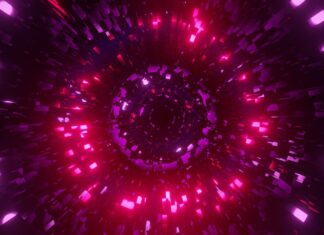Hyperpop is a genre of music that has gained significant attention in recent years for its experimental and boundary-pushing approach to pop music. Emerging from the internet underground, Hyperpop combines elements of electronic music, pop, hip-hop, and avant-garde sound design to create a distinct and often polarizing sonic landscape. In this guide, we’ll delve into the world of Hyperpop, exploring its origins, characteristics, key artists, and impact on the music industry.
1. Origins of Hyperpop Hyperpop emerged in the late 2010s as a subgenre of electronic music, originating from online communities and platforms such as SoundCloud, Bandcamp, and YouTube. It draws influences from a variety of genres, including electronic dance music (EDM), bubblegum pop, punk rock, and experimental music. The genre’s roots can be traced back to artists like PC Music, SOPHIE, and Charli XCX, who pushed the boundaries of pop music with their unconventional production techniques and avant-garde sensibilities.
2. Characteristics of Hyperpop Hyperpop is characterized by its hyperkinetic production style, characterized by frenetic beats, pitch-shifted vocals, glitchy effects, and heavily processed instrumentation. It often features exaggerated vocal delivery, with artists manipulating their voices through pitch correction, vocal synthesis, and other digital effects. Lyrically, Hyperpop explores themes of technology, identity, consumerism, and internet culture, reflecting the hyperconnected and digitized nature of contemporary society.
3. Influential Artists in Hyperpop Several artists have played a pivotal role in shaping the Hyperpop sound and aesthetic. PC Music, a record label founded by A.G. Cook, is often credited as a pioneer of the genre, with artists like Hannah Diamond, GFOTY, and Danny L Harle pushing the boundaries of pop music with their hyper-stylized productions. SOPHIE, a Scottish producer and artist, also had a significant impact on Hyperpop with her experimental approach to electronic music and boundary-pushing releases like “BIPP” and “Lemonade.”
4. Rise to Mainstream Recognition In recent years, Hyperpop has gained mainstream recognition and commercial success, with artists like 100 gecs, Charli XCX, and Rina Sawayama incorporating elements of the genre into their music. 100 gecs, comprised of Dylan Brady and Laura Les, gained a cult following with their debut album “1000 gecs,” which blended elements of Hyperpop, punk, and EDM to create a frenetic and genre-defying sound. Charli XCX embraced the Hyperpop aesthetic on her 2020 album “how i’m feeling now,” collaborating with A.G. Cook and other Hyperpop producers to create a bold and experimental record that resonated with both critics and fans.
5. Diversity Within Hyperpop One of the defining characteristics of Hyperpop is its diversity and inclusivity, with artists from diverse backgrounds and identities contributing to the genre’s evolution. LGBTQ+ artists, in particular, have played a prominent role in shaping Hyperpop, with many artists exploring themes of queerness, gender identity, and sexual liberation in their music. This diversity of voices and perspectives has contributed to the genre’s rich and vibrant tapestry, making it a welcoming space for artists and listeners alike.
6. Impact on the Music Industry Hyperpop’s rise to prominence has had a significant impact on the music industry, influencing trends in production, songwriting, and marketing. Major record labels have taken notice of the genre’s popularity, signing Hyperpop artists and incorporating elements of the genre into mainstream pop music. Additionally, streaming platforms like Spotify and Apple Music have curated playlists dedicated to Hyperpop, exposing the genre to a wider audience and further fueling its growth and popularity.
7. Collaborative Nature of Hyperpop Collaboration is a central tenet of Hyperpop, with artists often working together across genres and geographic boundaries to create innovative and boundary-pushing music. Online communities and platforms play a crucial role in fostering collaboration within the Hyperpop scene, allowing artists to connect, share ideas, and collaborate on projects remotely. This collaborative spirit has led to the emergence of new subgenres and micro-scenes within Hyperpop, further diversifying and expanding the genre’s sonic palette.
8. Criticisms and Controversies Despite its growing popularity, Hyperpop has also faced criticism and controversy, with some detractors dismissing it as a gimmicky and overly commercialized genre. Critics argue that Hyperpop prioritizes style over substance, relying on flashy production techniques and internet aesthetics to mask shallow songwriting and lackluster musicality. Additionally, the genre’s rapid rise to prominence has led to debates about cultural appropriation and authenticity, with some accusing mainstream artists of co-opting Hyperpop aesthetics without understanding or respecting its cultural roots.
9. Future of Hyperpop As Hyperpop continues to evolve and diversify, its future remains uncertain but promising. The genre’s boundary-pushing ethos and DIY spirit ensure that it will continue to challenge conventions and push the limits of pop music. With artists constantly experimenting with new sounds, styles, and ideas, Hyperpop is poised to remain at the forefront of musical innovation and cultural relevance in the years to come.
10. Influence Beyond Music Beyond its impact on the music industry, Hyperpop has also influenced other artistic disciplines, including fashion, visual arts, and internet culture. Its bold aesthetic and embrace of digital technology have inspired designers, photographers, and artists to explore new forms of expression and creativity. Additionally, Hyperpop’s embrace of internet culture and DIY ethos has resonated with younger generations, who see themselves reflected in the genre’s rebellious and irreverent spirit. As a result, Hyperpop has become more than just a musical genre; it’s a cultural movement that continues to shape and define the zeitgeist of the digital age.
Hyperpop’s impact extends beyond the realm of music, influencing fashion trends, visual aesthetics, and internet culture at large. Its bold and boundary-pushing aesthetic has inspired fashion designers to incorporate elements of the genre into their collections, with artists like Charli XCX and 100 gecs serving as muses for avant-garde fashion houses and streetwear brands. Visual artists and photographers have also drawn inspiration from Hyperpop’s vibrant and eclectic style, using digital manipulation and glitch art techniques to create visually striking works that mirror the genre’s hyperkinetic energy and digital aesthetic.
Moreover, Hyperpop has become intertwined with internet culture, with artists and fans alike embracing memes, viral marketing tactics, and social media platforms to spread their music and connect with audiences. Platforms like TikTok and Instagram have played a crucial role in the genre’s growth and visibility, allowing artists to share snippets of their music, collaborate with fans, and participate in viral challenges and trends. This symbiotic relationship between Hyperpop and internet culture has fueled the genre’s rapid ascent to mainstream prominence, making it a defining sound of the digital age.
In conclusion, Hyperpop represents a bold and boundary-pushing evolution of pop music, characterized by its hyperkinetic production style, experimental sensibilities, and embrace of internet culture. Emerging from the internet underground, Hyperpop has transcended its niche origins to become a global phenomenon, influencing trends in music, fashion, visual arts, and internet culture at large. With its diverse and inclusive community, collaborative ethos, and commitment to innovation, Hyperpop continues to push the boundaries of what pop music can be, inspiring artists and audiences alike to embrace creativity, experimentation, and individuality in the digital age.


















